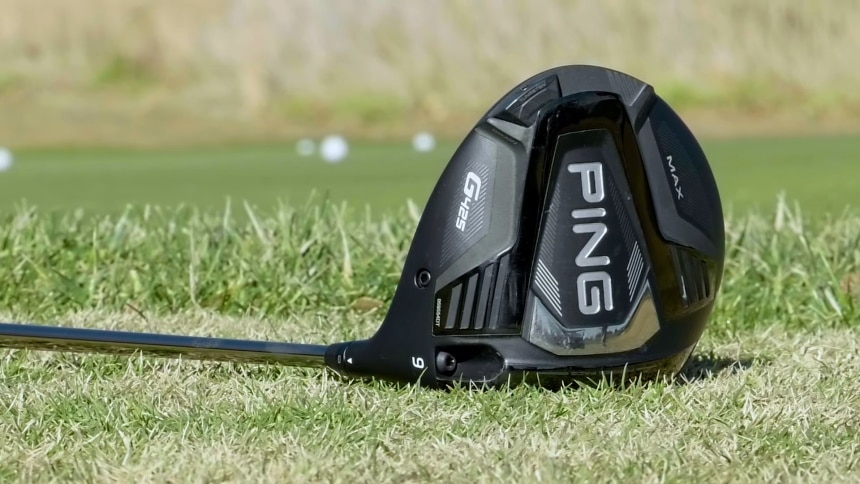
Straight shots from the tee to the hole are fantastic, but they aren’t as common as you may hope for. Instead, you may be dealing with a curved fairway that needs a specific technique to keep the ball on the course where it belongs. To make a shot like this, you may need to learn how to hit that a draw, which isn’t as easy as you may think.
Though the technique needed for a shot like this takes some practice and isn’t something most beginners can pull off, it isn’t impossible to achieve. Luckily, the following information can help you hit the perfect draw, so take at what we have to offer.
For right-handed golfers, hitting a draw means that the ball will curve slightly from right to left during flight. This is the opposite of a fade, which has a left-to-right curve for righties. If the ball goes too far to the left during a draw, it becomes a hook. For lefties, the draw moves in the opposite direction, curving gently from left to right.
Check this video to compare other golf shots and see a clear distinction between them:
There are a few reasons you may want to hit a draw golf shot. First, the ball can be carried anywhere from 5 to 15 yards further on the fairway. A draw also adds top spin, so your ball rolls farther after hitting the ground. Draws even help your ball stay on a curved fairway, hit around obstacles, or prevent a crosswind from carrying it off the course. Though walking around the golf course has fantastic health benefits Trusted Source A controlled trial of the health benefits of regular walking on a golf course To study the effects of regular walking during a golf game on various health and fitness indicators in middle-aged men. pubmed.ncbi.nlm.nih.gov and helps keep you fit, a good draw can prevent you from spending too much time wandering around to find your ball.
Hitting a draw with irons isn’t an easy task, though it can be taught if you take the time to learn the right technique. There are a few things you need to focus on, including the right club and body positioning during your swing.
You’ll need decent gear for the best shot possible. If you’re not sure what to look for, the best irons under $1000 have a few materials, weights, and handicap levels to pick from. Before you start swinging, you may also want to limber up a bit with some golf stretches. They are designed to stretch your muscles and joints so you’re ready to play all day long.
Irons are shorter clubs than drivers, which means you’ll have to shorten your swing when using them. They also require less timing for the perfect draw. Rather than using your hands and arms to swing your club, rotate your body instead. Your natural movements will help create the space for the inside to outside swing a draw requires.
During impact, many golfers feel the need to flip their hands, though this rotates the face from open to closed, resulting in a hook. Avoid this by using your body to rotate and square the clubface and leave your hands out of it.
Balance is important during any golf swing, though it can cause the ball to go too far to the right or left when trying to hit a draw shot. The shorter shaft of the iron requires you to rotate against your supportive trail leg during your backswing. When moving forward again, rotate your lower body, letting the weight of the club swing it inside-to-out and then down the target line.
Learning how to hit a draw in golf using a driver isn’t quite the same as the technique with an iron. This is due to the longer length and reduced loft of a driver, which affects the direction of the clubface, requiring more control to send the ball where you want it.
If you’re new to golf or techniques like this one, you’ll also need the right clubs to help improve your game. For high-quality pieces, the best drivers for beginners are forgiving, comfortable, and offer higher levels of control.
To properly hit a draw, you need to keep your clubface square during the backswing. Use your arms and body to rotate the club back rather than your hands. When you hit the top of your swing, your top hand wrist should be flat and even with your forearm.
A draw requires an inside-to-out swing, which means your club must stay on the proper path. As long as you have the proper backswing technique and maintained a square clubface, your should be able to achieve the necessary path on the front swing. It’s helpful to visualize a clock dial, with your club hitting the ball at 4 o’clock. Doing so will allow you to maintain the proper club path to hit the inside of the ball and create the necessary spin on impact.
There are a few factors that influence clubface control. First, you’ll need to maintain a square clubface at impact, which requires you to prevent it from opening too much while you’re swinging. Your grip is also important, so you’ll need to maintain the proper hand placement.
Your top hand should be on top of the club while the bottom hand is square or slightly beneath it. If needed, you can rotate your hands clockwise to tighten your grip, but be careful. Too strong of a grip is one way to cause a wrist injury Trusted Source Golf-induced injuries of the wrist Golf injuries of the wrist are rare, but when they occur they can be devastating for the avid golfer, competitive amateur golfer, or the professional golfer, as the hand and wrist are so integral to the game. pubmed.ncbi.nlm.nih.gov , which could keep you off the course until it heals.
Using quality golf gloves can also help you maintain your grip while trying to perform a draw. A favorite among golfers is the PGM Women’s Golf Glove, which is made of non-slip PU, with velcro adjustments and four color options.
Your entire body needs to be in sync during a draw swing, so it’s a must to stay connected and focused for the highest levels of accuracy. Many golfers overuse their hands and arms rather than their larger muscles, so pay extra attention to your movements for the best results. You can also try a swing align device to ensure the right club path. According to reviewers, the GoSports Golf Alignment Training Sticks is a quality training aid that improves your accuracy for draws and any other shot you have in mind.
The right hip movement can help you maintain control of your swing. While you rotate during your swing, your body should turn into your trail hip while your butt stays back. Your trail leg should feel the weight on the inside, as should the heel of the back foot. The trail hip should also turn away from the ball while the angle of your spine and your posture should remain steady.
To hit a draw, your follow-through needs to be aggressive. If you slow down before impact, the clubface or path could be altered and the draw could become a hook. Your chest should rotate to face your target during your finish.
Every golfer can use a few extra tips and positions to try to hit the perfect draw on every course. The following covers a few techniques to consider for your next round of golf.
Hitting a draw and a fade requires a similar technique, though the fade requires an outside-to-in swing to create the slight left-to-right shape of the shot. You’ll also need to loosen your grip a bit by rotating your hands slightly counterclockwise, aiming a little to the left, and opening the clubface.
When hitting a draw off the tee, you’ll need to tee up on the tee box’s left side. Doing so gives you extra room to aim right and create that left curve while the ball is in the air.
Hitting a high draw will get the ball over any obstacle in its path or allow for a longer roll when it lands. For a high draw, you’ll need to move the ball further up in your stance, which allows you to rotate your arms and hands enough during impact for the shot you require.
If you need to practice your draws before trying them on the course, there are a couple you can try.
The Alignment drill allows you to practice your aim to get far enough right and swing along the proper path. It also helps you learn the proper body position and face angle.
The Trap: this Arm Drill teaches you to isolate your left arm so you can feel the proper takeaway when shooting a tight draw.
Your equipment influences your ability to perform a draw, so it’s a good idea to consider what you’re using, especially if you’re unable to hit a draw, even with plenty of practice. A driver is best for those long shots off the tees but for draws off the fairway, you may need a fairway wood. For the top options, check out the best fairway woods for high handicappers, which are designed for better distance and loft. When it comes to irons, the 3 through 9 are best for hitting a draw.
Golfing doesn’t require the physical strength or exertion of other sports but you still need a few specific techniques to get the ball from the tee to the hole. There are several shot types that you can use for this process, some of which are more difficult to master than others. Learning how to hit a draw takes a great deal of practice to prevent it from becoming a hook and sending your ball well off course.
There are ways to make this process easier, though. Using the right equipment, including drivers, irons, and alignment tools, can help you reach your goals. Before long, you’ll be hitting the perfect draw, sending your ball exactly where you want it every time you step on the course.





